
| Thripse |

|
|
Here some pictures where Salvia divinorum is attacked by pests. The Outdoor Salvia #1, that is not mentioned here, had problems with slugs. |
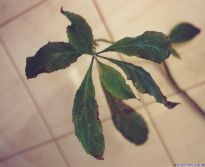
|
Thrips 1 This plants has Thrips. This pest can be a real problem for Salvia divinorum. The borders from this plant already died. But also some inner parts were damaged. |
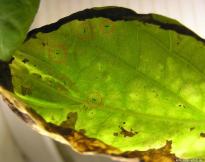
|
Thrips 3 Here also a lots of larva. On my Salvia plants I had at this time only larva but no adult Thrips. But you can see adult ones at Thrips image 7. |
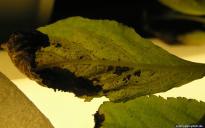
|
Thrips 4 A heavily damaged leaf. This will soon fall off the plant. |
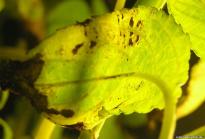
|
Thrips 5 This one also shows first signs of damage, that will spread if you dont kill them.. |
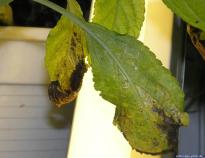
|
Thrips 6 On the right leaf you can see silver parts with flashlight. This is where the larva sucked the plant cells. The now empty cells reflect the light better so they look silver. |
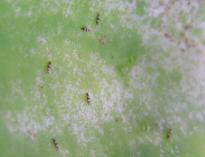
|
Thrips 7 Here some adults Thrips on a strong damages orchid leaf. The adult animals are around 1 to maximal 2 mm long. |
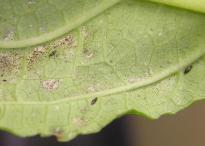
|
Thrips 8 Thrips and their demage at closer view. |
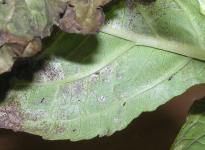
|
Thrips 9 Thrips and their demage at closer view. |
| Spider mites |

|
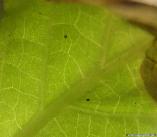
|
Spider mites 2 Both beast at a closer view. As you can see they love to hide under the leaves. Especially young mites are smaller and not so dark than these two and so not so easy to find. |
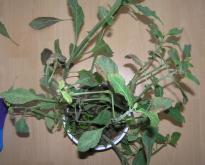
|
Heavy Spidermite Attack - Image 1 The complete plant or better the rest of it. Full size image coming later |
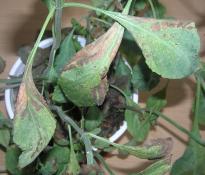
|
Heavy Spidermite Attack - Image 2 3 attacked leaves. You can see the yellow zones where the mites sucked plant juices. The leaves are already partly dead. Full size image coming later |
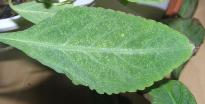
|
Heavy Spidermite Attack - Image 3 Another "pierced" Salvialeaf Full size image coming later |
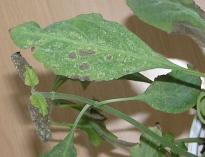
|
Heavy Spidermite Attack - Image 4 Leaf with dead zones. On the left side a dying tip. Full size image coming later |
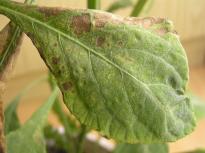
|
Heavy Spidermite Attack - Image 5 Salvia leaf with dead zones. Full size image coming later |
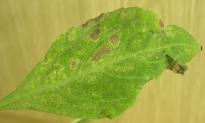
|
Heavy Spidermite Attack - Image 6 Heavy sucked leaf Full size image coming later |
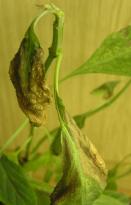
|
Heavy Spidermite Attack - Image 7 Here you can't do much - the spiders have won the war. Full size image coming later |
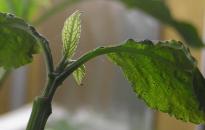
|
Heavy Spidermite Attack - Image 8 Here you can see very well how they build webs around the tips of the plant and around the borders of the leaves. This only occurs when there are a lot of spidermites. In such a state it's difficult to help the plant. Full size image coming later |
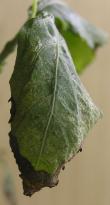
|
Heavy Spidermite Attack - Image 9 Here some of the beasts living on/from a leaf. Full size image coming later |
| Aphids |

|
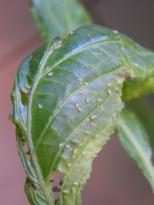
|
Aphids 1 A lot of aphids on this Salvia divinorum leaf. When the infection became too strong, then the plant only develops small leaves and drops a lot of hear leaves. The only problem with aphids that they disguise very good because of they green color. Killing them is not so problematic. Full size image coming later |
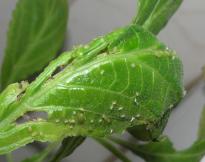
|
Aphids 2 Two nice aphid families. Nearly too sweet to kill them. Full size image coming later |
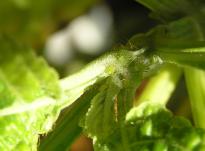
|
Aphids 3 Macro |
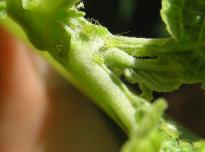
|
Aphids 4 Macro |
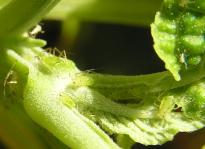
|
Aphids 5 Macro |
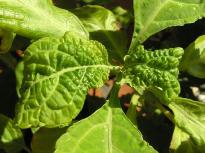
|
Aphids 6 Heavy aphidinfection results often in deformed and rolled leaves. |
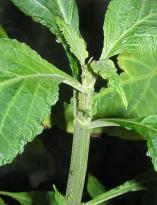
|
Aphids 7 Traffic at the tasty tip. |
| White Fly |

|
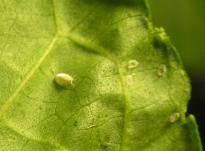
|
White Fly 1 Here a white fly beside 3 empty eggs (right). |
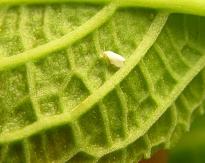
|
White Fly 2 White Fly - closer view. |
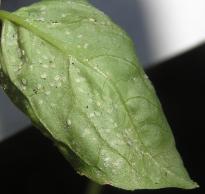
|
White Fly 3 Many, many eggs under a basilikum leaf. |
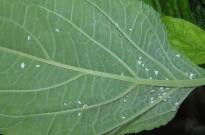
|
White Fly 4 White Flies concentrate during couple time under some leaves. There you can and you should get them. |
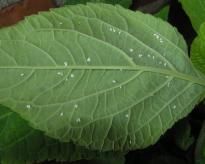
|
White Fly 5 White Flies having sex. |
| Caterpillar |

|
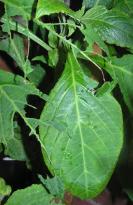
|
Caterpillar 1 Infection by caterpillar may result in major demage. |
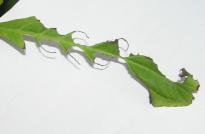
|
Caterpillar 2 Not much left. |
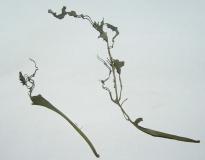
|
Caterpillar 3 The End |
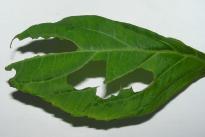
|
Caterpillar 4 Huge holes. |
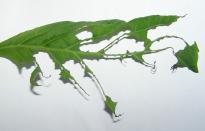
|
Caterpillar 5 Holes by caterpillar. They were smaller than 2cm. |
| Lack of Water |

|
|
Here an example how good Salvia plants can deal with lack of water.
But this is only possible with plants that are well adapted to normal room air with not so much humidity.
Plants under a tent will die in most cases when they are out of water so much because they are much more
sensible. |
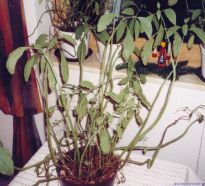
|
Recovery The same plant like in the picture before but 1-2 hours later. She came up slowly but steady and had no bad after effects from her lack of water. |
| Sunburn |

|
| When moving a Salvia divinorum plant from indoor to outdoor, then direct sun should be avoided, because the plants are not adopted to ultraviolet rays. After a while the plants adopt and can resist UV-light better. |
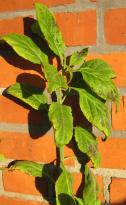
|
Sunburn 1 Burned areas everywhere. |
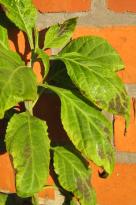
|
Sunburn 2 A closer view on the burned ares. |
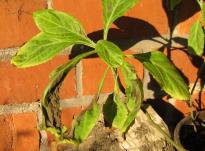
|
Sunburn 3 Heavy burning |
| Diverse Problems |

|
| Here some more problem cases that are possible. |
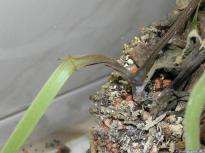
|
Stem rot #2 - Image 2 Here the brown part at the base of the stem at a closer view. |
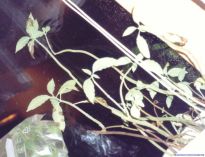
|
Black spots This thin plant has black spots. Because I couldn't find any pests I think its a problem with fertilizers - maybe too much or not enough fertilizers (I think not enough). |
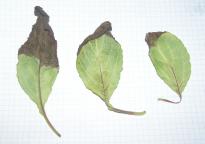
|
Brown leaf stem 1 At these three leaves you can see the brown stems of the leaves very good. |

|
Brown leaf stem 2 Also on this leaf you can see the brown stem. I had this effect especially after bringing plants indoors after summer. So it is maybe a stress reaction. |
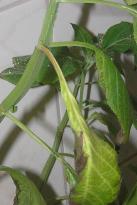
|
Brown leaf stem 3 This leaf is still hanging at the plant but already has a brown stem an will be dropped soon. |
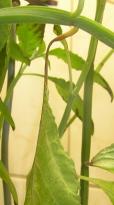
|
Brown leaf stem 4 This leaf is very soft becase there came no water or nutrients through the brown strem. The leaf dies that way. You can see here that the brown part is very soft and weak. |
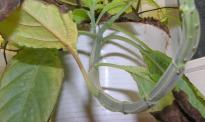
|
Brown leaf stem 5 This leaf is also still on the plant, but will fall soon. |
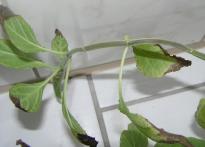
|
Red stem 1 Reddish colored stems should be like on other plants a sign of lack of nutrients. So giving fertilizer should help. |
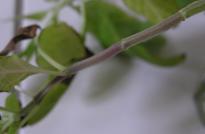
|
Red stem 2 Here you can see the red color very well. |
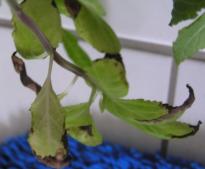
|
Red stem 3 Red stem and light colored leaves - here you really need some fertilizer. |
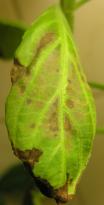
|
New lamp 2 This leaf is really in trouble and has some necrotic zones. |
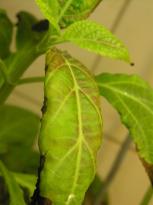
|
New lamp 3 Also this one is quite reddish. Even the young leaves in the background show first signs of red. |